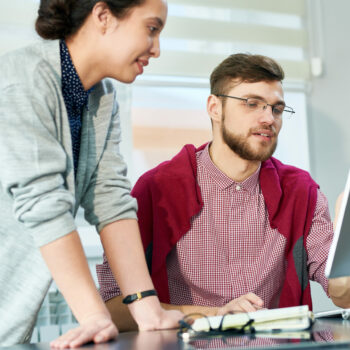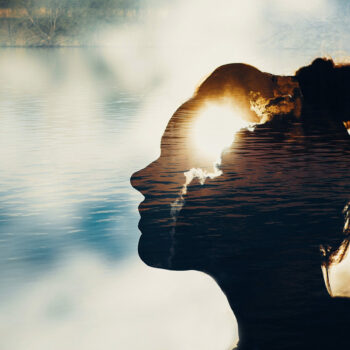
Building opportunities for primary pupils to do STEM activities enriches the curriculum and develops children’s skills. Matthew Howells is the STEM Coordinator at Ysgol Y Graig Community Primary School, in 2022 he won the ‘Primary Excellence in STEM Teaching’ award from STEM Learning UK. STEM learning experiences are embedded within the school’s curriculum and the work carried out in the school has led Ysgol y Graig to achieving platinum status with Eco-Schools and the Woodland Trust. Matthew shares with us the ways that STEM subjects are embedded across the school and within the 6 areas of learning experiences.
The Curriculum in Welsh Primary Schools
Recently in Wales, we have had the introduction of a new curriculum, which focuses on the development of skills in learners. The aim is to deliver a curriculum that equips learners with experiences, knowledge and skills that they will need for employment, lifelong learning and to become active citizens. All subjects have been placed within one of the 6 areas of learning experiences (AoLEs) and all AoLEs have equal status. These 6 AoLEs are:
- Language, Literacy and Communication – LLC
- Maths and Numeracy
- Science and Technology
- Expressive Arts
- Health and Wellbeing
- Humanities
Incorporating STEM into the 6 Areas of Learning Experiences
Within the school, we have decided to work in a way in which the children work in an inquiry-based approach and links are created between all 6 AoLEs as much as possible. STEM has had a heightened status over the past few years and the importance of embedding STEM within inquiries has been a great focus for me as the STEM Coordinator and for us all as a school. This case study demonstrates an example of how STEM has been used, in order to create a cross-curricular approach and incorporate all AoLEs.
This inquiry started with the idea of looking at how the world around us is full of living things which depend on each other for survival. This inquiry developed over time through adult planning, as well as pupil voice. The areas that were decided upon to investigate were:
- How living things interact in their environment
- All living things require specific conditions and resources to survive
- Humans form part of the living world and our decisions and actions can have a significant impact
- Developing an understanding of the factors which affect health, allows us to make informed decisions about our physical health and how we impact the world.
Science and Technology
We started by talking about the animals and habitats that the children were interested in learning about and gaining new knowledge of. Some of these ideas were easy to achieve, as we engaged in activities such as pond dipping, river kicks and minibeasts hunts. We visited local woodlands and meadows as part of the learning, however, some of the animals and habitats the children were interested in learning about were not so easy to achieve. In order to visit habitats such as the desert, under the sea, etc, we used VR headsets. This enabled the children to witness footage of animals in their natural environment and see the ways in which they interact with each other, live and survive.
Expressive Art

We used these experiences as a basis for creating artwork. The children created pieces of art that were completed in two different ways. The first was unplanned and abstract, with the second being more planned and controlled. For the first stage of the work, the children wore VR headsets and were watching sharks swimming in their natural environment. Will watching the sharks, the children held loaded paintbrushes and echoed the movement of the sharks on large easels. The children were unable to see their work while painting and could not plan at all. The intention was simply to move with the shark and wait to see the finished result. The second stage for the work was to add features to the piece of art that was inspired by the sharks surroundings. After viewing footage on the headsets of the coral, seaweed, etc, the children were able to add detail to their work, however this time they were able to plan and see what they were completing. This produced pieces of art that had both an unplanned and planned element to them.
Humanities
Following this experience, the children were taken on a visit to the greenhouses in a local park. During the visit, the children had the opportunity to look at fossils, chip away at rocks and try to discover fossils for themselves and see plants that had been planted in sections of historical periods. The children learnt about how plants have developed over time, by growing spikes, itchy hairs, etc, which have enabled them to be protected and not be a food source for animals. The children became really interested in the plants that were around and a food source for herbivore dinosaurs. Using the headsets, the children looked at different types of dinosaurs and decided they would like to create two T-Rex footprints, by using their own prints. One was created with handprints and the second with fingerprints. The children also used globes and atlases, to learn about where in the world the plants they had seen would grow, based on the climate conditions they need. Through pupil voice, the children expressed an interest in creating a dinosaur garden in the school yard for the younger pupils. We worked with a local geologist from the local greenhouses who supplied us with a variety of plants and different types of rocks, in order to create the garden.

Health and Wellbeing, Maths and Numeracy LLC
When thinking about the impact that humans have on the environment, the children started thinking about littering and pollution. We started out by arranging weekly litter picks in our local area, which the children used for collecting and presenting data. The children kept details of the quantity of items that were collected on in-house data programmes, as well as uploading the data to ‘Keep Wales Tidy’. Very near the school, there is also the development of a new dual carriageway system, which got the children thinking about the pollution that is being created from that.

We decided to carry out a project which involved us going on 3 walks a day, over the space of a fortnight. The 3 walks were carried out at the same times each day and followed the same route. While out walking, the children carried air pollution monitors which gathered readings and levels of pollution. The children downloaded the data and were able to interpret the data, in order to find out what levels of pollution were being created by the building of the road, as well as what time during the day the pollution was highest/lowest. As a way of reducing our impact on our environment, the children came up with the idea of having a bike break initiative. This was created to encourage children to bike or scoot to school and each class has a weekly timeslot, where they are able to use their bikes and scooters around the school grounds. The children promoted this initiative, as well as a litter-reducing campaign, by creating posters and leaflets that were displayed and disseminated around the local community.
Register FREE to access 2 more articles
We hope you’ve enjoyed your first article on GE Insights. To access 2 more articles for free, register now to join the Government Events community.
(Use discount code CPWR50)




